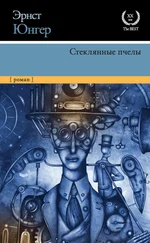Then about Wagner, who appeared to me in a new, more meaningful light for our age. I thought I spotted the error of Baudelaire, who possessed an authentic relationship to the ancient, eternal verities. Thoughts about the mighty mind of the dramatist who breathes artificial breath into past ages and dead cultures so that they move like corpses we can quote. A sorcerer of the highest order who conjures with real blood at the gates of the underworld. [1] E. J. applies to Wagner categories from Nietzsche, which include a caricature of the composer as sorcerer.
Things assume colors that make it hard for even the sharpest eye to distinguish truth from illusion. The actor steps into reality, becomes a historical person, achieves triumphs, garners laurels as green as real ones. What good does it do to contradict or debate with him? He has arrived because his time has come. In this alone lies his guilt, which runs deeper than any guilt based on individual action. Art as a hothouse of past ages—it is like a promenade through winter gardens or salons where palm trees bloom. It is hard to take issue with this, for the terrors of destruction are so great, so horrifying, that the will to rescue a single shade is all too understandable. Nietzsche presents a contrast that stands and falls in wintery tempests. These are the exemplars that our youth, like Heracles, beheld at the crossroads.
The case of Nietzsche contra Wagner [2] Nietzsche contra Wagner (published 1895) refers to a critical essay written by Nietzsche that collects earlier passages from his writings focused particularly on Wagner’s religion. It promoted a major aesthetic debate about music and the role of the composer.
reminds me of those little toy houses we used to have with their different figures that would emerge depending on the weather conditions. One little figure would stand outside and forecast the weather, prophetically correct but out of step with the moment. The other showed the prevailing climate conditions, whether or not signs of a downturn could be sensed. For that reason, this figure waits in safety, away from the bright light. And yet they both were attached to one and the same little strip of wood fashioned by the carver of the little weather house.
SAINT-MICHEL, 24 FEBRUARY 1941
Departed from Sars-Poteries, in particular from my eighty-two-year-old maiden lady, whom I thanked before dawn while she was still in bed. Then marched to new quarters near Saint-Michel, at first in a light frost and then through damp snow. The numerous destroyed or abandoned houses make the town a forbidding place. A tank juts out of the little river that flows through it. Myths are already being created: people say the driver plunged off the bridge to deprive the Germans of their prize. Wherever the inhabitants have moved back again, they have attached strips of white linen to the doors of their houses to signal their presence. They give an impression of being poorer and more famished than the people of Sars-Poteries. Swarms of children with bare legs frozen blue huddle at the field kitchens. Rats can be heard scampering in the houses; cats stare from the empty windows.
I am living with Rehm in the house of a landlady whose husband is a prisoner of war in Germany. She is probably around forty but is still attractive, lively, and hospitable and likes to talk about her husband, whom she provides for diligently. Still, I’d like to think of her as available; she is filled with high spirits stimulated by fresh and vibrant experiences. Such things often dwell in one and the same heart, for the moral world cannot be called to account or dissected as neatly as the physical world. By the same token, most men do not behave like Othello (something I never understood before) but know how to forgive, especially in long-lasting marriages.
SAINT-MICHEL, 27 FEBRUARY 1941
Vivid dream images, as usual, in the early morning hours. I was taking part in a meeting where people were amusing themselves by imitating dead or forgotten politicians. They were improvising in the spirit of the moment. Here and there someone in the company would rise from his seat and provoke hilarity with his histrionic gestures. I saw a large stout man pretending to be Bismarck; he enjoyed loud applause. It occurred to me that many a subtle gesture elicited much surprise and laughter, but only among a few people. I concluded from this that the people here were my contemporaries, probably my colleagues. But the survivors of small forgotten cliques could be seen wildly applauding figures whose humor was lost upon anyone but them.
The group gave the superficial impression of being high-level civil servants or retired generals, types known from anecdotes and lost personal accounts that show them carousing in their clubs. There was an undercurrent with a different tone, this time concerning the drama of human history, but one devoid of bitterness, producing mirth instead. It was suffused with a trace of childlike innocence, like the kind that comes as no surprise in dignified old retired gentlemen. Also a little bit of plaudite, amici [Give me your applause, friends], if we take the meaning in an ironic or self-deprecating sense.
SAINT-MICHEL, 1 MARCH 1941
Significant warming over the past two days. At first accompanied by showers, then by sunshine. The snow disappeared in no time with the warm breeze. Water levels rose, and the trees gleamed in the play of color that marks early spring.
As for animals: I saw large Timarcha beetles [bloody-nosed leaf beetles] crawling on the hard earth yesterday in the rain; noticed especially how the male of the species showed very broad tarses [leg joints]. I imagine that this chrysomelid [member of leaf beetle family Chrysomelidae ] is related to the early onset of warmer days. When I was a young boy, I noticed this as one of the first signs of life in the bare quarries near Rehburg as it glistened blue in the February or March sun. In Algeria and Morocco, I saw them in their large forms as early as December, and their appearance always correlated with a certain mood of melancholy that overcomes me during this period of the year and then disappears when the trees turn green.
Then as I was riding my bicycle along the road to Hirson, I brushed past a salamander—a female recognizable by the greatly enlarged mons veneris [mound of Venus] visible at this time of year. Its gentle swelling terminates in the brown-spotted abdomen tinged with a faint red pigmentation. I carried the little lady, who twisted gently in my fingers, to a damp meadow—thereby saving her life. How many times has the sight of such creatures filled me with new strength, like a source of life?
SAINT-MICHEL, 7 MARCH 1941
Yesterday Rehm and I called on Madame Richardet’s aunt, who had invited me for a meal. We talked about being thunderstruck—that coup de foudre [love at first sight]—as a form of love to be avoided.
Field maneuvers in the morning in the vicinity of Ferme La Butte; during these, I meditated on the theme of worlds—for example, reflections of human relationships in other dimensions—to visualize them better. One might think of polished spheres—such as cloudy opals or rock crystals—that reflect the drama more minutely, intensely, and deeply. It could all play out in a large house that can be explored from cellar to attic.
SAINT-MICHEL, 27 MARCH 1941
In Charleville, I was a witness at a military tribunal. I used the opportunity to buy books, like novels by Gide and various works by Rimbaud, who was born here and—as I was told by the bookseller—where a small circle of poets preserves his memory. On the return trip I read a beautiful passage about the kaleidoscope in Si le grain ne meurt [ If It Die , 1924].
Читать дальше

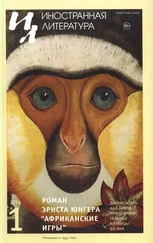

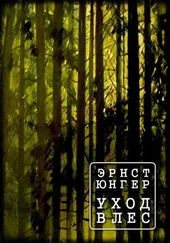

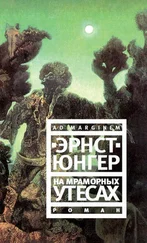

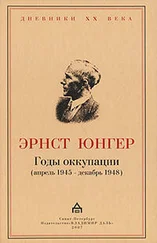
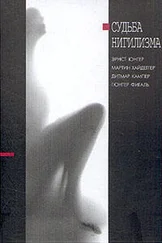
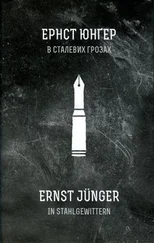
![Эрнст Юнгер - Стеклянные пчелы [litres]](/books/410842/ernst-yunger-steklyannye-pchely-litres-thumb.webp)
